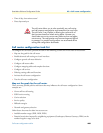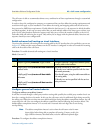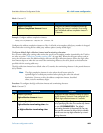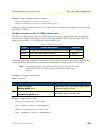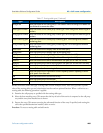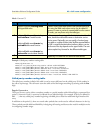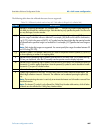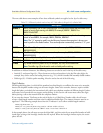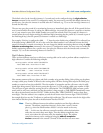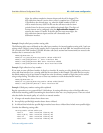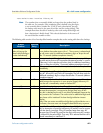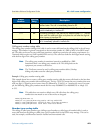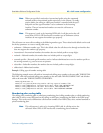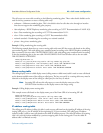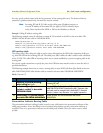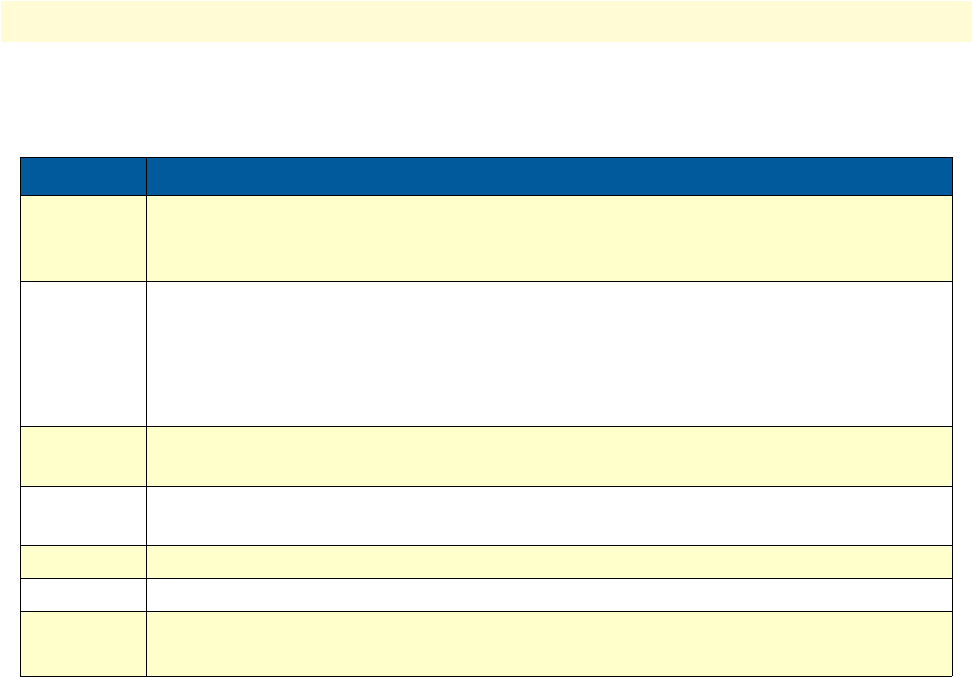
Call router configuration task list 468
SmartWare Software Configuration Guide 40 • Call router configuration
The next table shows some examples of how these wildcard symbols are applied to the key of a table entry:
In addition to wildcard characters, the following characters can also be used in the key of the table entry:
• Asterisk (*) and pound sign (#) – These characters can be used anywhere in the key like other digits, for
example, they can be used as the leading character (e.g. *21), which is handled like normally dialed number.
• Dollar sign ($) – Disables prefix matching. Must be used at the end of the dial string.
Digit Collection
Fixed-length dialing plans, in which all the numbers have fixed length, are sufficient for most voice networks,
because the telephone number strings are of known lengths. Some voice networks, however, require variable-
length dial plans, particularly for international calls, which use telephone numbers of different length. Further-
more some voice networks do not support overlap dialing. In this case the call-router must collect the digits
before placing a call to that network with the complete number.
If you enter the timeout T-indicator at the end of the key in a Called-Party Number table, the call router
accepts a fixed-length number and then waits for additional dialed digits. The timeout character must be an
uppercase T. The following example shows how the T-indicator is set to allow variable-length numbers:
node(cfg)#context cs
node(ctx-cs)[switch]#routing-table called-e164 collect
node(rt-tab)[collect]#route 0041T dest-interface CHVoIP-A
In the example above, the call router accepts the digits 0041, and then waits for an unspecified number of addi-
tional digits as long as the interdigit timeout has not expired. When the interdigit timeout expires, the router
places the call.
Table 19. Wildcard symbols used as keys in E.164 tables (calling-e164, called-e164)
Expression Description
88825.+
88825, followed by one or more wildcard digits. This expression implies that the number must
contain at least 6 digits starting with 88825; for example, 888251, 8882512 or
888251234567890
88825.%
88825, followed by zero or more wildcard digits. This expression implies that the string must
contain at least 88825; for example, 88825, 888256, 8882567.
Note: The “.%” expression postfix can be left away, because the expression is always com-
pared as prefix to the dialed number. Thus each expression automatically contains a “.%” post-
fix.
88825+
8882, followed by 5 repeated one ore more times; for example, 88825, 888255, or
8882555555555
888(25)+
888, followed by 25 repeated one or more times; for example, 88825, 8882525 or
8882525252525
0?111
An optional 0, followed by 111; for example, 0111, 111, 11123456789
8882[56]…
8882 followed by 5 or 6, plus at least three more wildcard digits.
.%45$
Any number that has a postfix of 45; for example, 45, 045, 0041998882545.
Note: The dollar sign ($) at the end is used to disable prefix matching.



